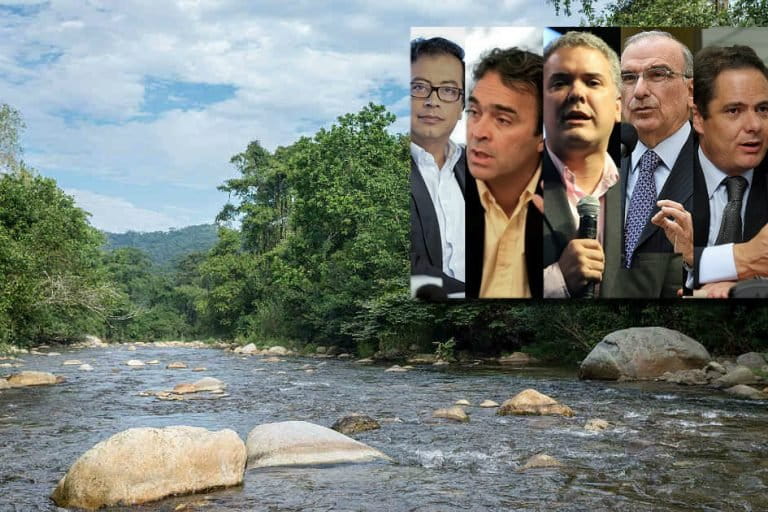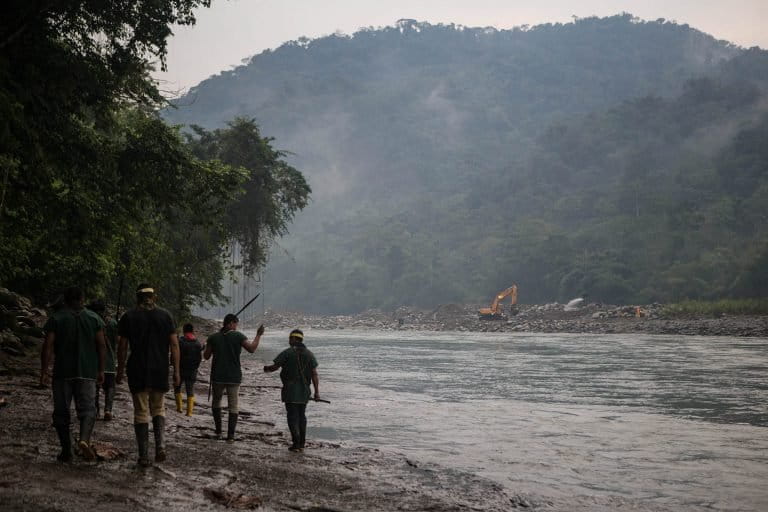Below are summaries of the most popular stories by our Spanish language service, Mongabay Latam, from the week of May 14 -20. Among the top articles: an environmental court seeks to stop environmental crimes in the most deforested region of Peru. In other news, with elections around the corner in Colombia, experts take a closer look at candidates’ environmental positions; the majestic Hyacinth macaws of Bolivia fight to survive; and the Cofán people of Ecuador protest mining on their lands.
The image above from the vast Mongabay archive, of a red-winged parrot (Aprosmictus erythropterus), a species native to Australia and New Guinea, was the most popular on Latam’s social networks.
An environmental court created for the most deforested region of Peru

The first environmental court of Madre de Dios will have a caseload of 3000 environmental complaints. Mining, illegal mining and forest destruction are the most constant and relevant problems of this region.
Colombia: How is the environment faring in the presidential elections?

Next Sunday Colombians will elect President Juan Manuel Santos’ successor. Fourteen environmental organizations came together to call attention to the environment, a theme often neglected in campaign discussions. Their ‘traffic light’ ratings gave leading rightwing candidate Iván Duque a red light for proposals to simply raise awareness about biodiversity and strengthen the National Environmental System as ‘insufficient’ actions to control deforestation. His main opponent, leftist Gustavo Petro, got a yellow light for proposals that focus primarily on only one deforestation driver: mining.
Bolivia: “They say I’m not indigenous.”

After she spoke at the United Nations about the damage of hydroelectric plants to indigenous communities, Bolivian indigenous leader Ruth Alipaz Cuqui denounced government attacks and pressure to silence her. “The government and others said a lot of things about me. That I’m not indigenous and don’t represent anyone, that I’m a businesswoman,” said Alipaz, who still hasn’t gotten used to being called an activist, or an “environmental defender.” Her fight is not individual, but for many peoples, she clarifies. An NGO report estimates that the Chepete and El Bala hydropower projects will flood “an area five times larger than the urban footprint of the city of La Paz.”
Colombia: What happens to the rainforest after the rebels are gone

Recent studies show a pattern of increased deforestation that coincides with the exit of the FARC rebels from occupied territories. The rebels were present in strategic zones for forest conservation, such as Chocó, Guaviare, Caquetá y Putumayo. Half of them are protected areas.
Ecuador: Mining threatens Sinangoe Cofán indigenous community

Ten recent mining concessions in their territory have put Cofán communities in the Amazon on high alert. To protect their land, the Sinangoe community has developed its own environmental monitoring system to track mining activity. “We demand that they immediately annul the mining concessions at the head of the Aguarico river and ban mining in our territories, headwaters and sources, zones of hydro regeneration, special conservation zones, protected forests and fragile ecosystems,” asked Mario Criollo, community president.
Hyacinth Macaw: Can the population of Bolivia’s iconic bird be saved?

With less than 300 left in the San Matias Integrated Management Natural Area, Bolivian conservationists are trying to save the Hyacinth macaw through education and birdwatching tourism. Even if trafficking of this species is reduced in the area, one of the latent threats is the annual burning pastures that affects the availability of trees where it nests.
You can read about these stories in Spanish here
